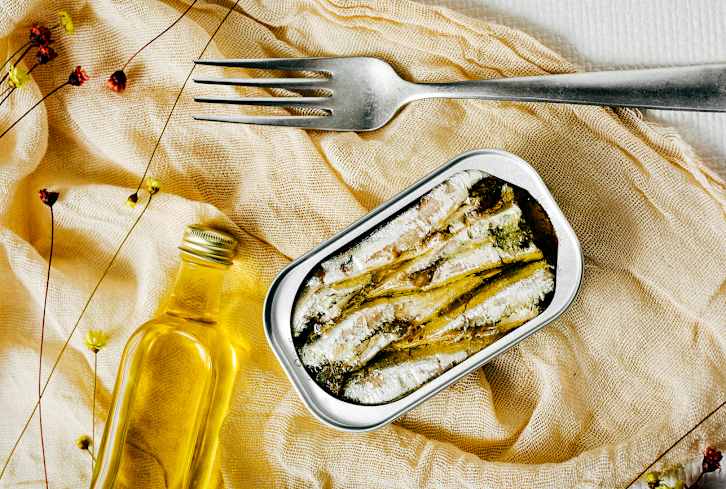Advertisement

Some fast facts for you: In and on our bodies, microbial cells outnumber our own human cells by about ten to one. That microbial content makes up about 1-3% of our bodyweight—around the same amount as our brain. And its ecosystem—our microbiome—may even be more unique than our fingerprints!
Scientists have covered lots of ground in research on the human microbiome, but the reality is there’s still so much we don’t know about how these trillions of microbes influence our development, immunity, mental health, and nutrition.
But long story short, we do know that probiotics are the good, health-friendly bacteria that help defend our bodies from certain disease-causing bacteria. So maintaining a balanced microbiome is a big deal, and taking a probiotic supplement is one of the ways we can help our bodies do that. Keep in mind, though, that the Food and Drug Administration hasn’t approved any probiotic supplements for treating or preventing any health problem. It’s all thanks to heavy ongoing research that we’re seeing how beneficial they can be.
Aside from making sure that you’re storing your probiotic correctly, aware of its shelf life, and eating foods with prebiotics to stimulate the growth of good bacteria, to help ensure its efficacy, your probiotic supplement should check these four important boxes below.
Does it pack a variety of live cultures?
Research suggests that certain strains provide health benefits—some more effective than others when it comes to influencing certain issues. For instance, the strains S. cerevisiae1 and B. lactis2 have been researched for their potential ability to help support gastrointestinal wellness. The prevailing wisdom says “the more strains the merrier,” and though the latest studies can’t 100% confirm this (they don’t refute it, either), it’s probable that the more strains of cultures a probiotic has, the more likely it’ll provide noticeable health benefits.
Do the cultures make it to your intestinal tract alive?
For live probiotics that go from a manufacturing process to your intestines, survival is the name of the game. And FYI, they’re pretty fragile. It may sound like a no-brainer, but in order for your probiotic to be effective, the live bacterial strains actually need to make it past the stomach’s harsh acids to your large intestine, where they colonize and help repopulate your gut. The problem is that many probiotic supplements start disintegrating in the stomach before they even reach its final destination, so it’s game over before it even started.
Tech-forward probiotic brand Solaray® developed the Enteric Shield® capsule specifically for Mycrobiome® Probiotic formulas. The vegetable capsule is designed to naturally resist stomach acid, remaining intact for more than 60 minutes in the stomach, without using added coatings and processing. Then, when the capsule hits an alkaline environment—for instance, when it moves into the intestines—the capsule melts away, and the live strains can do their thing and populate the gut lining.
Many probiotic supplements start disintegrating in the stomach before they even reach its final destination, so it’s game over before it even started.
Is the formula targeted to your health needs?
It goes without saying that a one-size-fits-all probiotic supplement does not exist. Everyone’s health journey and lifestyle is different from the next person’s, and therefore, no two microbiomes are alike. (Even our own microbiomes change from day to day). Since we’re talking personal microbiomes as unique as our fingerprints, being cognizant of probiotic formulas that are specific to your needs, goals, and lifestyle is key.
For general gut health, a common daily serving3 for adults is about 10-20 billion live cultures, or CFUs (colony-forming units). To help improve any specific health concerns, you may need to go higher—some manufacturers go as high as 250 billion CFUs in a daily serving. (What’s too high a daily serving? That’s one of the areas of research that remain unclear, though for healthy adults, many studies have found only few mildly adverse side effects, like gas).
Knowing this, Solaray® designed six different formulas for its Mycrobiome® line—from Women’s and Men’s to Adults 50+ to weight management—containing a research-backed, optimized range of different non-GMO probiotic strains (up to 24) and live cultures. Its Colon Formula, for instance, contains 50 billion CFUs of 18 probiotic strains that may help improve digestive health.
Does it have the go-ahead from your physician?
Perhaps the most important part of this is the green light from your doctor. As with any nutritional or dietary supplement, talk with your doctor about your health needs and goals to see if taking a probiotic is right for you. A health professional who’s familiar with your history and lifestyle can help you take an informed approach to keeping your gut happy and healthy.



















